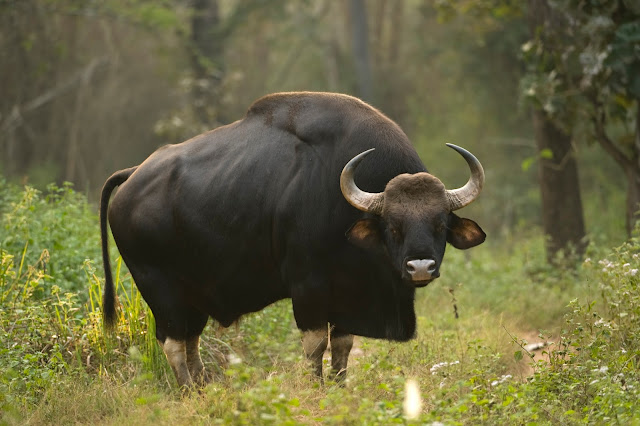Blind river mammal with smart brain - Indian Blind Dolphin
We all know a name "Dolphin" the most curious and energetic a mammal of sea with smart brain.
It is a general belief that the home of dolphin is deep water of see, so it is a creature that adapted to a salty water.
"But there is a species of dolphin that adapt fresh river water as its home to live"
Introduction
- Indus River Dolphin is a subspecies of a fresh water river dolphin found in the Indus river of India and Pakistan.
- This Dolphin was the first discovered side-swimming cetacean.
- The Indus dolphin does not form easily defined groups who interact. Instead, they are typically found in aggregations.
- From 1970s until 1998, the Ganges river dolphin and Indus dolphin were regarded as a separate species: however in 1998, their classification was changed from two separate species to subspecies of a single species.
Physical Characteristics
- The Indus Dolphin has the long, pointed nose characteristic of all river dolphin.
- The teeth are visible in both the upper and lower jaws even when the mouth is closed.
- The teeth of young animals are almost an inch long, thin and curved. However, as animals age the teeth undergo considerable changes and in mature adults become square, bony, flat disks.
- The flippers and tail are thin and large in relation to the body size, which is about 2 to 2.2 m in males and 2.4 to 2.6 m in females.
- The oldest recorded animal was a 28-year old male 199 centimetres in length.
- Mature adult females are larger than males.
Reproduction
- Sexual dimorphism is expressed after females reach about 150 cm.
- The female rostrum continues to grow after the male rostrum stops growing; eventually reaching approximately 20 cm longer.
- Gestation period is thought to be approximately 9 to 10 months.
- Calves have been observed between January and May and do not appear to stay with the mother more than a few months.
- One calf is born with a length ranging between 0.7 and 0.9 m , this is almost half the size of the mother.
Human Interaction
- The Indus River Dolphin has been adversely affected by human use of the river systems in the sub-continent. Entanglement in fishing nets can cause significant to local population numbers.
- Some individuals are still taken each year and their oil and meat used as a liniment.
- Irrigation has lowered water levels throughout their ranges. Poisoning of the water supply from industrial and agricultural chemicals may have also contributed to pollution decline.
- Perhaps the most significant issue is building of dozens of dams along many rivers, causing the segregation of populations and a narrowed gene pool in which dolphins can breed.
Conservation
- Something sorrowful is happening with the Indus river dolphin as there are only about 1,100 individuals left in the Wild.
- International trade is prohibited by the listing of the Ganges river dolphin on Appendix I of the Convention on International Trade in Endangered Species (CITES).
- It is also listed in the Agreement on the Conservation of Small Cetaceans of the Baltic and North Sea (ASCOBANS), under the auspices of the CMS.
- It is protected under the Indian Wildlife Act, although these legislations require stricter enforcement.
- Proposed conservation measures include designated dolphin sanctuaries and the creation of additional habitat. Further research into the current distribution and abundance of this elusive river-dweller is urgently required in order to implement effective conservation measures.




Comments
Post a Comment